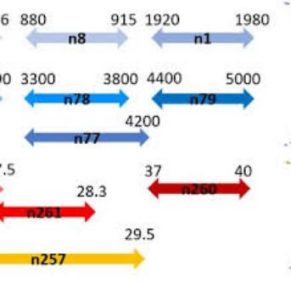What Are the Applications of an Elliptical Waveguide?
Enhanced Performance in High Frequency Bands

Elliptical waveguides are particularly valued in the telecommunications industry for their superior performance at high frequency bands, notably in the millimeter-wave spectrum. These waveguides efficiently transmit signals with frequencies ranging from 30 GHz to 300 GHz. Their oval cross-section allows for a more focused beam and a direct path, reducing signal attenuation compared to traditional circular or rectangular waveguides. This capability is crucial in applications such as satellite communication and radar systems, where maintaining signal integrity at high frequencies is essential.
Reduced Crosstalk in Dense Installation Environments
A notable benefit of the elliptical waveguide is its ability to reduce electromagnetic interference and crosstalk. This quality is vital in environments where multiple waveguides are installed closely, such as in data centers or broadcast facilities. The unique shape of the elliptical waveguide minimizes the interaction between adjacent waveguides, ensuring cleaner transmission of data with fewer errors. This feature is especially important in applications requiring high data integrity and minimal latency.
Improved Flexibility and Bend Tolerance
Another key advantage of elliptical waveguides is their exceptional flexibility and bend tolerance. Unlike rigid rectangular waveguides, elliptical waveguides can be bent over tighter radii without significant increases in signal loss. This flexibility facilitates easier installation in complex routing scenarios, such as in urban telecommunications networks or within spacecraft and aircraft where space is at a premium. Their ability to bend without compromising performance significantly reduces the risk of installation errors and equipment damage.
Optimal Use in Polarization-Sensitive Applications
Elliptical waveguides are uniquely suited for polarization-sensitive applications. The oval shape supports the transmission of both vertical and horizontal polarized waves with minimal cross-polarization. This feature is critical in advanced radar and communication systems, where polarization control plays a significant role in the accuracy and efficiency of the signal transmission. By enabling precise polarization control, elliptical waveguides enhance the performance of systems reliant on specific polarized states.
Cost-Effective Deployment in Harsh Environments
The robust construction of elliptical waveguides also makes them an excellent choice for use in harsh environmental conditions. Their structural integrity ensures reliable performance under extreme temperatures, moisture, and physical stress, which are common in outdoor and industrial settings. This durability reduces the need for frequent replacements and maintenance, leading to lower long-term operational costs.
Versatile Integration in Modern Telecommunication Systems
From terrestrial to space applications, the benefits of elliptical waveguide technology find utility across a wide array of modern telecommunication systems. They are particularly beneficial in scenarios where space conservation, signal fidelity, and system longevity are paramount. Their ability to handle higher frequencies with reduced loss makes them indispensable in the ongoing evolution of communication technologies, especially as the world moves towards more 5G and eventually 6G implementations.
Conclusion
Elliptical waveguides offer a series of compelling advantages that make them indispensable in high-performance communication and radar systems. With their unique ability to handle high frequencies, maintain signal integrity in dense installations, and withstand harsh environments, elliptical waveguides continue to be a key component in the advancement of modern telecommunication infrastructure. Their ongoing development and deployment will undoubtedly continue to play a critical role in shaping the future of global communication networks.